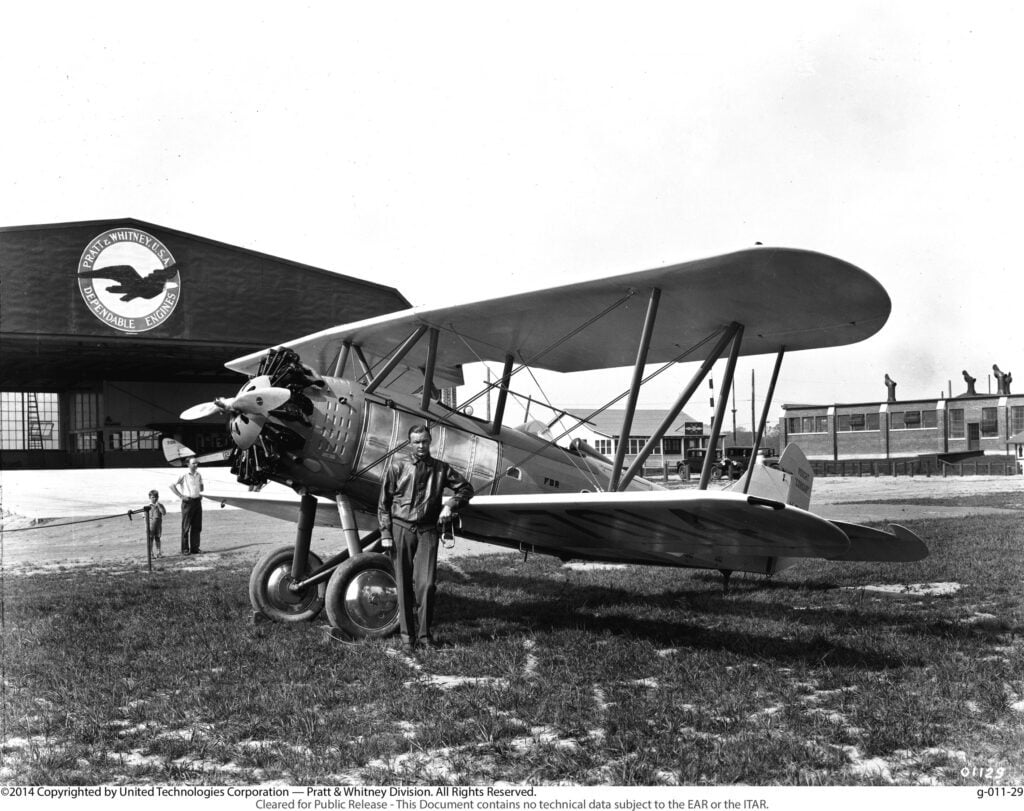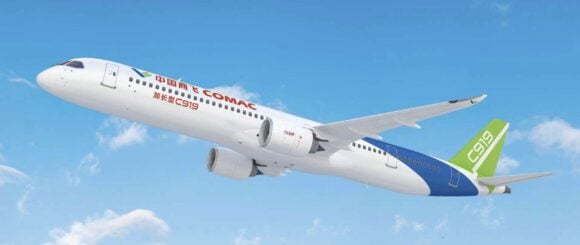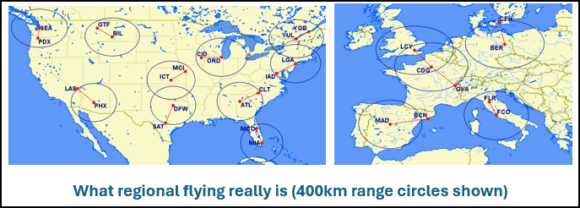
Pratt Whitney founder Frederick B Rentschler in front of his Wasp engined Vought O2U Corsair
PR– EAST HARTFORD, Conn. (July 22, 2025) – Pratt & Whitney, an RTX (NYSE: RTX) business, today celebrates one hundred years since being incorporated and revolutionizing military and commercial aviation with its R-1340 Wasp radial engine. A century later, Pratt & Whitney’s products have helped shape the modern world and the company continues to be a global leader in aircraft propulsion technology, with more than 90,000 engines in service, powering all types of fixed-wing aircraft and helicopters.
“Since our founding in 1925, the people of Pratt & Whitney have designed, built and supported the safest, most dependable engines in aerospace, united by a common purpose: connecting people, growing economies and defending freedom,” said Shane Eddy, president, Pratt & Whitney. “Our 45,000 employees worldwide work every day to uphold our 100-year legacy of safety, innovation and dependable engines. The words ‘dependable engines’ are literally stamped on every engine we produce – it’s a mission our entire team lives by and a commitment to our customers.”
Pratt & Whitney’s visionary founder, Frederick B. Rentschler, saw the potential of a lightweight, air-cooled radial engine to enable unparalleled levels of power and reliability for aviation. By October 1926, Pratt & Whitney’s first 425-horsepower R-1340 Wasp engine had won the approval of the U.S. Navy, which ordered 200 engines to power its early carrier-based aircraft, paving the way for the company’s rapid growth. With the development of more powerful variants, Wasp family engines propelled hundreds of aircraft types through the early to mid-20th century, and played a vital role in enabling Allied victory in the skies during World War II, when more than 363,000 engines were produced during the conflict.
At the dawn of the jet age, Pratt & Whitney successfully pivoted from its commitment to radial engine development by leading another major innovation in aircraft propulsion technology with one of the world’s first twin-spool gas turbine engines. The J57 engine and its commercial equivalent, the JT3C, powered aircraft such as the Boeing B-52 Stratofortress and 707 and DC-8 airliners, ushering in a new era of commercial air travel and laying the foundation for advancements in gas turbine technology which have continued ever since.
Today, the business provides industry-leading propulsion technologies for more than 17,000 customers. The Pratt & Whitney GTFTM engine is the most fuel-efficient engine for single-aisle aircraft, powering the Airbus A220, A320neo, and Embraer E2 jet families for more than 85 airlines worldwide. The Pratt & Whitney F135 engine is the safest, most capable and reliable fighter engine, powering the Lockheed Martin F-35 Lightning II. Pratt & Whitney Canada plays a leading role in powering a wide array of general, regional and business aviation aircraft, having independently developed and certified more than 200 engine types since the introduction of the PT6 turboprop engine in 1963.
“From the introduction of the PW127XT and GTF Advantage, to the development of the F135 Engine Core Upgrade, our world-class team is redefining what’s possible for our customers,” said Eddy. “Leveraging the unrivalled breadth and scale of RTX, we are well positioned to shape the future of flight for the next 100 years, as we continue to build on our legacy of innovation with investments in advanced technologies such as hybrid-electric, hydrogen, rotating detonation and adaptive propulsion.”
As part of centennial celebrations taking place throughout the year, Pratt & Whitney is engaging its employees with a travelling exhibit visiting 11 of its facilities around the world, and which can also be experienced online. A historical marker will also be unveiled at the site of Pratt & Whitney’s original headquarters in Hartford, Connecticut.
Notes:
- We have been covering this company since the start of our aviation journey. To date, over 100 stories.
- There’s quite a bit more to P&W history that isn’t mentioned above.
- P&W joins a select group of aviation companies that have reached a century.
- Boeing (USA) Founded: July 15, 1916
- Rolls-Royce (Aero Division) (UK) Founded (original): 1906
- Safran (France) has roots dating back to the early 20th century through its predecessor companies, including Gnome et Rhône.
- Lufthansa Technik (Germany) Parent airline (Lufthansa): Originally formed in 1926 (as Deutsche Luft Hansa AG)
- P&W has an illustrious history, being connected to United Airlines and Boeing
- The Common Root: United Aircraft and Transport Corporation was founded in 1929 by William Boeing and Frederick Rentschler (founder of Pratt & Whitney).
- UATC was a vertically integrated aviation empire—one of the first of its kind—combining: Aircraft manufacturing (Boeing), Engine manufacturing (Pratt & Whitney), Propeller manufacturing (Hamilton Standard), Airline operations (United Air Lines), and Maintenance and services (e.g., United Air Lines’ early technical operations)
- Following a major scandal known as the Air Mail Scandal, President Franklin D. Roosevelt ordered the dissolution of vertically integrated aviation companies. UATC was split into three separate companies: Boeing Airplane Company, United Aircraft Corporation (later United Technologies, which kept Pratt & Whitney), and United Air Lines.
Views: 178




